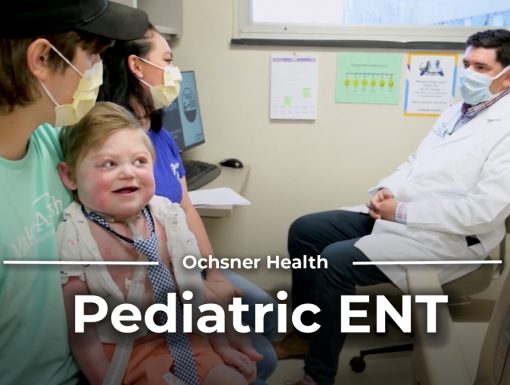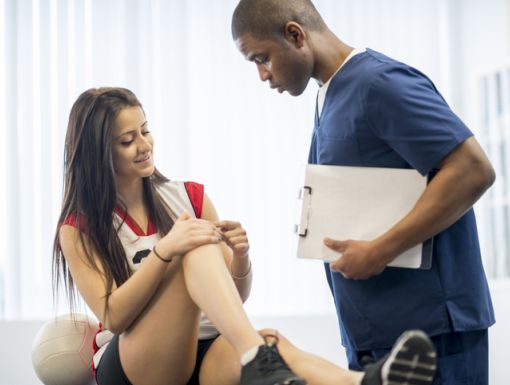
9 Common Symptoms of Strep Throat and How to Treat It in 2024
The Centers for Disease Control says there are up to 24,000 cases of strep throat in the United States each year. Children and adults alike can be affected by strep throat. And while the infection can cause some serious issues if left untreated, strep throat is common and treatment is straightforward and simple.
What is strep throat?
Strep throat is a throat and tonsil infection caused by group A Streptococcus bacterium (called “group A strep”). While viruses can cause throat pain (and are the most common causes of sore throats), strep throat infections are strictly bacterial.
This infection is contagious and highly transmissible, spreading through respiratory droplets (when a person sneezes, coughs, or even talks). A person can also pick up the infection through shared food and drinks or other contaminated surfaces like doorknobs.
Strep throat can even spread to other areas of the body. The infection can affect not only the throat, but the tonsils, sinuses, skin, blood and the middle ear as well.
Common signs and symptoms
Two to five days. That’s the typical incubation period – or the time that passes between when a person is exposed and when they begin to feel symptoms – for strep throat to manifest. It makes your throat feel scratchy and uncomfortable.
Like with a typical sore throat, common symptoms can include:
- Pain that happens quickly
- Pain when swallowing
- Painful and swollen tonsils, sometimes with white patches
- Tiny red spots on the back roof of the mouth
- Swollen and/or tender lymph nodes in your neck
- Fever
- Headaches
- Rashes
- Nausea or vomiting (especially in kids)
It’s good to note that sometimes strep throat comes with a rash called scarlet fever. This rash, which is a distinctive pinkish-red color and can form anywhere on the body, isn’t any more dangerous than strep throat itself.
Symptoms more common with a viral sore throat versus strep are:
- Cough
- Runny nose
- Hoarseness
- Pinkeye (conjunctivitis)
It is possible to have some or all these symptoms and not have strep throat. These could be a sign of a viral infection or some other illness. It’s also possible to be exposed to someone who has strep throat, but never displays any of the associated symptoms.
Who’s at risk for developing strep throat?
Strep throat can affect anyone, but children and certain adults are at a higher risk. Up to 3 in 10 children with a sore throat have strep throat while only 1 in 10 adults with a sore throat has strep. It’s most common in children ages 5 through 15. It’s rare in children under age 3. This is because younger children haven’t been exposed to as many germs and haven’t yet acquired immunity.
But 15% to 20% of kids are considered “strep carriers.’’ This means that a tiny amount of strep lives in their throat at all times. They don’t show any common symptoms, but if tested, they will be positive. This small amount of strep typically isn’t enough to be considered contagious.
Adults who tend to spend a fair of time around children are at an increased risk for strep throat. Infectious illnesses tend to spread quicker where larger groups of people gather. Places like schools and daycare centers are just a few examples.
Time of year can also increase your chances of contracting strep throat. Even though you can catch it any time of the year, strep throat tends to circulate in the winter and early spring months.
When should I contact a doctor?
Most sore throats will resolve themselves in a few days with at home care. However, contact a doctor if:
- Symptoms don’t get better or begin to get worse after a few days
- Sore throats occur often and don’t respond to pain medication
- Fever is present as this often indicates an infection of some kind
People with weakened immune systems should contact a doctor immediately for treatment.
How is strep throat diagnosed?
A doctor will examine a person’s throat for signs of the infection if he/she believes they have strep throat. Some cases will present small white bumps on the tonsils themselves while others may manifest in the form of dark red spots on the roof of the mouth at the top of the throat. If the doctor thinks a person may have strep throat, they will order a test that involves swabbing the back of the throat to collect a sample.
Doctors test for strep throat with with rapid antigen or molecular testing. A rapid antigen test gives results quickly, often in under 10 minutes. And while these tests can offer fast results, they aren’t perfect. If the rapid test delivers a false-negative result, and the doctor still suspects strep throat, they will order a throat culture. This method of strep throat detection is considered the gold standard but takes 24-48 hours to get results. The doctor will typically start you on a prescription for antibiotics to treat the infection while waiting for the culture results.
How do you treat strep throat?
Strep throat is treated with antibiotics like penicillin or amoxicillin. However, those with an allergy to penicillin may take clindamycin, clarithromycin, or azithromycin instead. These medicines kill the bacteria and stop it from growing. Most people will need to take antibiotics for 10 days. It’s important to take the entire prescription even if a person begins to feel better in the first few days. This prevents the infection from coming back.
It’s not completely uncommon for strep throat to “come right back” in some children even after finishing 10 days of medicine. These bounce-back cases don’t necessarily mean something was done wrong. There are plenty of explanations. For example, if children are passing it back and forth in a classroom where the infection is being treated at contrasting times or because the bacteria is hiding deep within the folds of the tonsils and the antibiotics had a tough time reaching it. Changing up the antibiotics or simply repeating the course will help it go away.
There are several things an adult or child can do at home to help with recovery:
- Avoid hot foods that can irritate the throat
- Drink cool drinks and eat cool, soft foods to ease pain
- Avoid smoking and smoky environments
- Gargle with slightly salted warm water or mouthwash
- Take over-the-counter medicine like acetaminophen or ibuprofen
- Take honey to soothe sore throat but don’t give it to children younger than 12 months
- Use a cool mist humidifier
Note that children and teenagers should never take aspirin.
Serious complications aren’t common, but they can happen. For example, if strep throat goes untreated in children, it can cause rheumatic fever, a disease that can affect the heart, joints, brain, and skin. Other complications could include abscesses around tonsils or neck, sinus infections, ear infections, or post-streptococcal glomerulonephritis (a kidney disease).
It’s important to follow the treatment plan the doctor provides. If symptoms don’t subside after 48 hours (about two days) with antibiotics, contact your doctor for next steps. People with strep throat should stay home from school or work until they no longer have fever and have been taking antibiotics for 12 hours.
How can strep throat be prevented?
Here are some ways a person can reduce the risk or frequency of sore throats.
- Wash your hands. This is the most effective way to prevent most infections.
- Cough or sneeze into your upper elbow if a tissue isn’t available.
- Don’t share drinks or utensils with others if you’re sick.
- Avoid close contact with people who are ill.
Cleaning after strep throat
After taking antibiotics for at least 12 hours, cleaning high touch surfaces like doorknobs, light switches, countertops, and appliance handles can help reduce spread and reinfection. Here are some other tips for getting the house squeaky clean and sanitized after strep:
- Clean all reusable containers.
- Soak and thoroughly clean children’s toys with hot soapy water or run them through the dishwasher.
Although painful, strep throat is common and easily treated. If you’re experiencing any of the symptoms mentioned above, make an appointment with your physician for further evaluation and testing.
If you are experiencing any of the symptoms listed above, visit your Ochsner urgent care.



